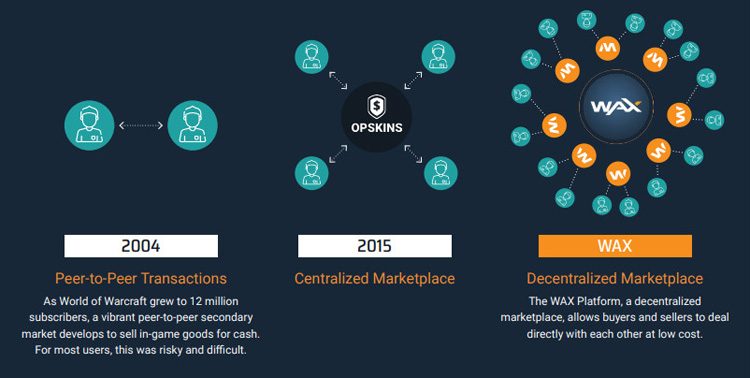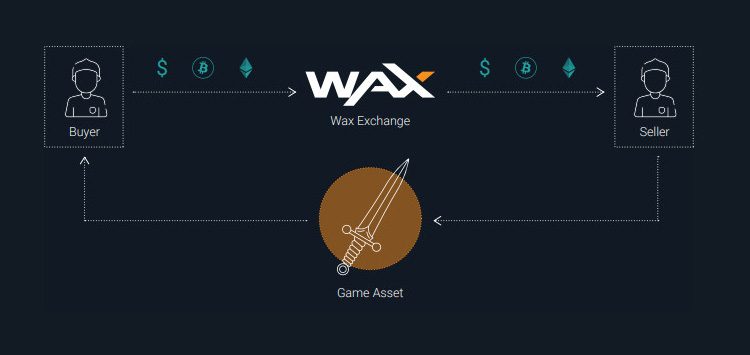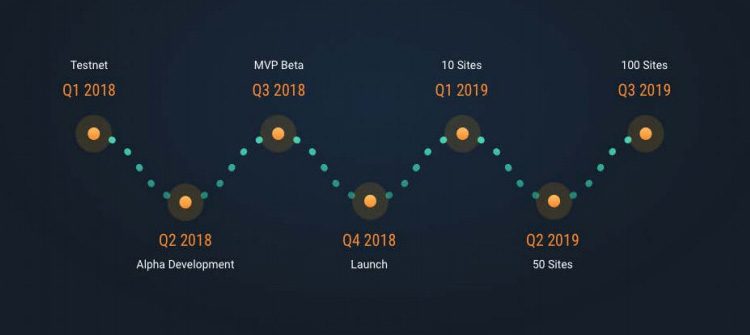What is the Worldwide Asset eXchange (WAX)?
Strategically rethinking in-game asset trading
Given that the founders of OPSkins – world’s largest in-game asset marketplace – have moved onto become the founders of the Worldwide Asset eXchange tells you almost everything you need to know about this project.
To enable WAX to support existing games, there must be a process for handling of non-tokenized assets
Whereas OPSkins is a centralized site for trading assets from Steam games such as Counter-Strike: Global Offensive, H1Z1 and PUGB, the goal for WAX is to provide a decentralized plug-in market and cryptocurrency anyone can use to set up their own trading exchange for all in-game assets whether they support the WAX blockchain or not.
The existing market is already estimated to be worth $50 billion a year in terms of the total value of items traded with around 400 million players making up the market, but given its advantages in terms of trust, transparency, speed and lower transaction costs, WAX could increase that significantly.
The platform’s structure is complex, however, so read carefully.
Balances and counter-balances
The core component of the Worldwide Asset eXchange is the WAX token that enables users to list items for sale as well as settling the transfer of value between traders.
It also plays a key role in maintaining the underlying system behind the exchange, which uses nodes – called Guilds – to handle the trading and exchange of in-game items that don’t use the WAX blockchain.

Of course, if a developer supports the WAX token natively for in-game items, trading is simple and seamless. However, to enable the WAX platform to support existing games, which will be the vast majority of trading for years to come, there must be a process to handle the trading of non-tokenized assets.
In that context, guilds are the confirming nodes of the WAX platform and are elected through a delegated proof of stake process by users. The guilds are responsible for forming blocks of transactions and they must sign these block and transact them to other guilds on the platform.
When WAX launches, there will be 64 guilds, each of which handles just one game or one game server
For this service, they receive the fees earned within the block. They also handle the transfer of the in-game items; again claiming a cut of each transaction they successfully complete. Periodically they transfer a percentage of their fees to their pledged stakeholders, who typically are the WAX users.
In this way, at set times, users holding WAX tokens get eight votes to distribute between existing and potential guilds. These are then ranked in order of votes. At any time, users can reallocate their votes to other guilds, although when they do so they will obvious lose their stake – and rewards – in their original guild
Futureproof
When WAX launches, there will be 64 guilds, each of which handles just one game (or one game server), although multiple guilds can support the same game or game server if there is enough voter demand.
Obviously this number will increase as support for more games is added and/or the community required new game servers to be added. This process will occur as these new guilds can be proposed (at the cost of 10 WAX tokens) and voted on during a set time period. If enough votes are received the total number of guilds will be increased by eight.

In this way, it’s hoped the system’s inherent rewards will maintain a balance of trust between its user base and the guilds who ensure WAX runs properly and in-game asset trading is successful, as well as providing the flexibility required to keep the system up-to-date.
Tech specs
In terms of how WAX will be accessed, there are four components.
WAX Connect is a browser-based SDK that provides a set of functions to allow the building of listing widgets, performing wallet transactions etc.
10 sites should support WAX by Q1 2019, rising to 100 by the end of 2019
WAX Node is the full node implementation of the platform that will be run by each guild and other ecosystem participants. Each WAX node will hold a complete copy of the WAX blockchain.
WAX Wallet allows non-WAX users to hold WAX and participate in guild voting and finally WAX Core is an SDK that encapsulates the core elements of Node and Wallet for those who want to build on top of the WAX platform.
What’s next?
Given the scale and complexity of the project, it’s no surprise that WAX has a long roadmap, with a formal launch not expected until Q4 2018.
It’s hoped 10 sites will support the technology in Q1 2019, rising to 100 sites by the end of 2019. At present, the first live implementation of WAX is via OPSkins, which is acting as the test case for alpha testing.

The company completed its ICO in late 2017 raising $41 million or $68 million depending on reports.
The cryptocurrency is now being traded on exchanges, notably HuobiPro, although given WAX can currently only be used on OPSkins, it has very little utility value at present.
